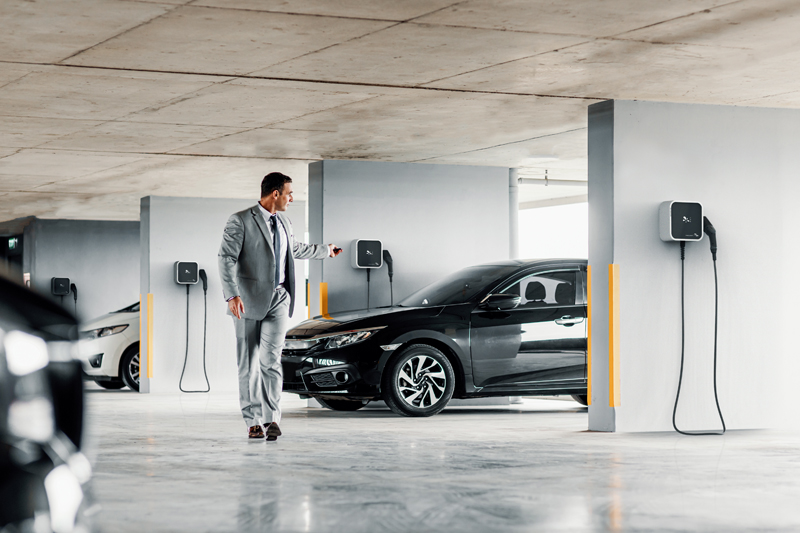
What are the requirements considered essential for making installation of home or business EV charging stations easier and faster? We hear from the team at Juice Technology.
The key requirements for a ‘perfect’ installation lie in the characteristics of equipment and manufacturer. For those who need to install and maintain electric vehicle charging systems, be it in a private home or a public or corporate car park, not all chargers are created equal.
As a manufacturer of electric vehicle charging solutions, Juice Technology has always designed its products with the user in mind. This makes the chargers easy to use, but also practical and quick to install.
Two installation options
Generally, there are two options for installation: the fixed installation of a wall charger or the portable charger. The latter doesn’t need to be fixed to the wall and therefore only requires installation of a connection. This gives the customer maximum flexibility while benefiting from the same functions as a wall charger.
The most important points for electrical installers to consider are:
1. If the charging station is already pre-configured, fully assembled and tested upon delivery from the manufacturer’s factory, it only needs to be connected to the existing electrical system to be ready for operation. The Ethernet cable and power supply, meanwhile, remain connected without the risk of tampering. This ensures quick, easy and trouble-free installation.
2. A fixed charging station should be applicable for mounting in a variety of ways – on a wall, recessed or even on a column, for example. This enables complete flexibility and responsiveness to the customer’s needs in terms of location and the type of use. In the case of wall-mounted boxes, in addition to the electrical connection, the box needs to be fixed to the wall. If the charging station already comes with a complete assembly kit, this is a simple operation: just apply the template, pre-drill the holes, screw on the back panel with all the electronics, put on the cover and you’re done.
3. The total weight of a charger may not exceed a certain limit – let’s say 5 to 10 kg, so no special lifting equipment is required at the installation site. If the weight remains below a certain threshold, one person alone can do the job.
4. Using electrical equipment can be risky. Adequate protection of the equipment is therefore essential. If installed outdoors, weather may affect the equipment; equipment installed in a car park must be able to withstand high-pressure cleaners. The IP67 class of protection offers total protection against dust and liquids, thus ensuring a longer service life for outdoor use and protection against splashes and drops of water.
5. Another important point is that the installation doesn’t require a separate certificate, which would otherwise have to be obtained by the electrician. So, the easy to install charger must also be easy to use. Intuitive LED symbols make commissioning much easier: green – ready to use, orange – request for activation via RFID card (alternatively via ‘Plug and Charge’ according to ISO 15118), and blue – charging process active.
6. It is a great advantage for any installer to be able to rely on a manufacturer who will provide their customer with necessary support in the event of a fault or if a component needs to be replaced. In the case of Juice, support is centralised at the producer who then takes care of the technical support once installation has been carried out. This simplifies the work of the installer: they only need to connect and install the equipment.
7. The possibility of recharging a car by using excess energy produced by a photovoltaic system allows the consumer to optimise consumption, with significant financial savings. For this reason, the growing integration of these two technologies could lead to a significant increase in the number of installations in both the residential and commercial sector. In order for a photovoltaic system to be successfully integrated into the home energy management system, the wall charger used must be equipped with a back-end that allows for online device management, remote maintenance and billing.
8. If you find yourself in a situation where a user has to manage multiple stations, be it a fleet or a public car park, dynamic load management that can supply the vehicles connected to the network with energy is of great help. Where available energy can be distributed to all the vehicles currently charging, there is no need for a new supply line. However, it is essential to integrate a MID-certified electricity meter into each charger, thus enabling billing based on the amount of electricity actually used for charging.
Browse the full range of EV charging solutions from Juice Technology here









